From inside (document excerpt):
Skin Contact This material can cause mild skin irritation from prolonged or repeated skin contact. Injection under the skin can cause inflammation and swelling. Injection of pressurized hydrocarbons can cause severe, permanent tissue damage. Initial symptoms may be minor. Injection of petroleum hydrocarbons requires immediate medical attention. If swallowed, large volumes of material can cause generalized depression, headache, drowsiness, nausea, vomiting and diarrhea.
Heating, Ventilating and Air Conditioning User Manual Free Download. HAVC Operator’s Manual. Auto AC Free Instruction Manual Download PDF.
Smaller doses can cause a laxative effect. If aspirated into the lungs, liquid can cause lung damage. This product contains a petroleum-based mineral oil. Prolonged or repeated skin contact can cause mild irritation and inflammation characterized by drying, cracking, (dermatitis) or oil acne. Repeated or prolonged inhalation of petroleum-based mineral oil mists at concentrations above applicable workplace exposure levels can cause respiratory irritation or other pulmonary effects. Disorders of the following organs or organ systems that may be aggravated by significant exposure to this material or its components include: Skin May cause damage to the following organs: skin. This product is not known to contain any components at concentrations above 0.1% which are considered carcinogenic by OSHA, IARC or NTP. Ingestion Chronic Health Effects Summary Conditions Aggravated by Exposure Target Organs Carcinogenic Potential OSHA Hazard Classification is indicated by an “X ” in the box adjacent to the hazard title. If no “X ” is present, the product does not exhibit the hazard as defined in the OSHA Hazard Communication Standard (29 CFR 1910.1200). OSHA Health Hazard Classification OSHA Physical Hazard Classification Irritant Toxic Corrosive Sensitizer Highly Toxic Carcinogenic Combustible Flammable Compressed Gas Explosive Oxidizer Organic Peroxide Pyrophoric Water-reactive Unstable SECTION 4. FIRST AID MEASURES Take proper precautions to ensure your own health and safety before attempting rescue or providing first aid. For more specific information, refer to Exposure Controls and Personal Protection in Section 8 of this MSDS. Inhalation Vaporization is not expected at ambient temperatures. This material is not expected to cause inhalation-related disorders under anticipated conditions of use. In case of overexposure, move the person to fresh air. Check for and remove contact lenses. Flush eyes with cool, clean, low-pressure water while occasionally lifting and lowering eyelids. Seek medical attention if excessive tearing, redness, or pain persists. If burned by hot material, cool skin by quenching with large amounts of cool water. For contact with product at ambient temperatures, remove contaminated shoes and clothing. Wipe off excess material. Wash exposed skin with mild soap and water. Seek medical attention if tissue appears damaged or if pain or irritation persists. Thoroughly clean contaminated clothing before reuse. Discard contaminated leather goods. If material is injected under the skin, seek medical attention immediately. Do not induce vomiting unless directed to by a physician. Do not give anything to drink unless directed to by a physician. Never give anything by mouth to a person who is not fully conscious. If significant amounts are swallowed or irritation or discomfort occurs, seek medical attention immediately. Eye Contact Skin Contact Ingestion Page Number: 2 Notes to Physician SKIN: In the event of injection in underlying tissue, immediate treatment should include extensive incision, debridement and saline irrigation. Inadequate treatment can result in ischemia and gangrene. Early symptoms may be minimal. INGESTION: The viscosity range of the product(s) represented by this MSDS is greater than 100 SUS at 100°F. There is a low risk of aspiration upon ingestion Careful gastric lavage or emesis may be considered to evacuate large quantities of material. SECTION 5. FIRE FIGHTING MEASURES NFPA Flammability Classification Flash Point NFPA Class-IIIB combustible material. Closed cup: 208°C (406°F). (Pensky-Martens. (Minimum)).


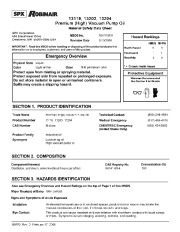 Robinair SPX 13119 13203 13204 Cacuum Pump Owners Manual - 1 of 8
Robinair SPX 13119 13203 13204 Cacuum Pump Owners Manual - 1 of 8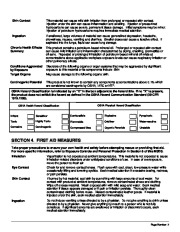 Robinair SPX 13119 13203 13204 Cacuum Pump Owners Manual - 2 of 8
Robinair SPX 13119 13203 13204 Cacuum Pump Owners Manual - 2 of 8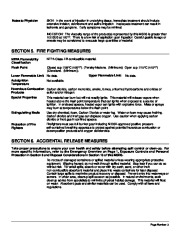 Robinair SPX 13119 13203 13204 Cacuum Pump Owners Manual - 3 of 8
Robinair SPX 13119 13203 13204 Cacuum Pump Owners Manual - 3 of 8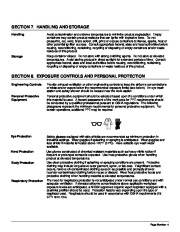 Robinair SPX 13119 13203 13204 Cacuum Pump Owners Manual - 4 of 8
Robinair SPX 13119 13203 13204 Cacuum Pump Owners Manual - 4 of 8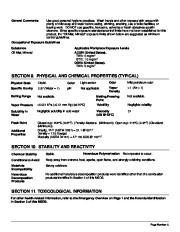 Robinair SPX 13119 13203 13204 Cacuum Pump Owners Manual - 5 of 8
Robinair SPX 13119 13203 13204 Cacuum Pump Owners Manual - 5 of 8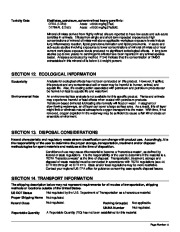 Robinair SPX 13119 13203 13204 Cacuum Pump Owners Manual - 6 of 8
Robinair SPX 13119 13203 13204 Cacuum Pump Owners Manual - 6 of 8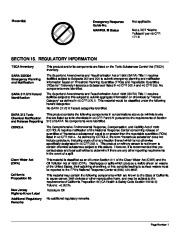 Robinair SPX 13119 13203 13204 Cacuum Pump Owners Manual - 7 of 8
Robinair SPX 13119 13203 13204 Cacuum Pump Owners Manual - 7 of 8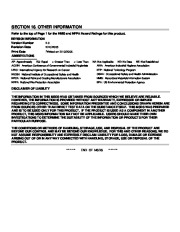 Robinair SPX 13119 13203 13204 Cacuum Pump Owners Manual - 8 of 8
Robinair SPX 13119 13203 13204 Cacuum Pump Owners Manual - 8 of 8